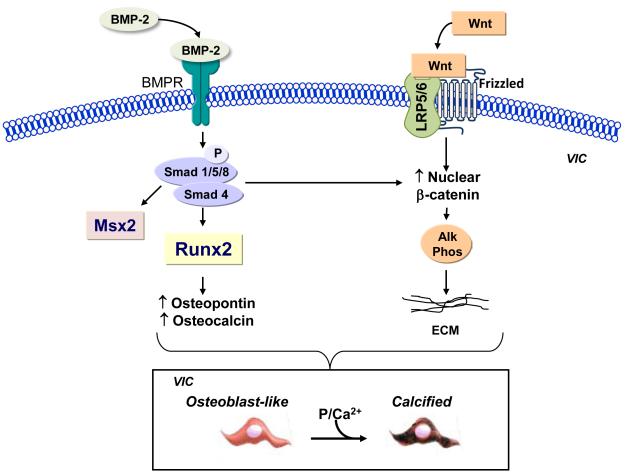Figure 3.
Bone morphogenetic protein and Wnt signaling in VICs. Bone morphogenetic proteins (BMP) bind to the bone morphogenetic protein receptor (BMPR) to phosphorylate (P) and activate Smad signaling. Smad signaling increases transcription of the osteoblast transcription factor Runx2, which leads to upregulation of Runx2-dependent calcification proteins. Smad signaling also increases expression of Msx2 and participates in β-catenin-mediated gene transcription. BMPs also promote Wnt signaling. Wnt ligands bind to receptor complexes of frizzled protein/lipoprotein receptor-related protein (LRP) 5 or 6 to activate β-catenin signaling and upregulate expression of alkaline phosphatase. Together these signaling pathways promote transition of VICs to osteoblast-like cells that are able to calcify in the presence of phosphate and calcium. VICs, valve interstitial cells.

